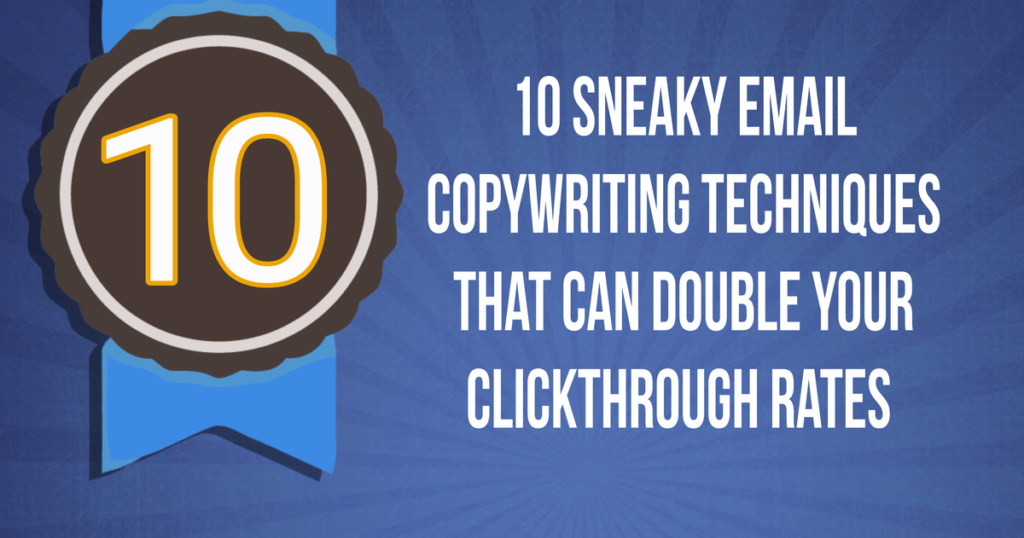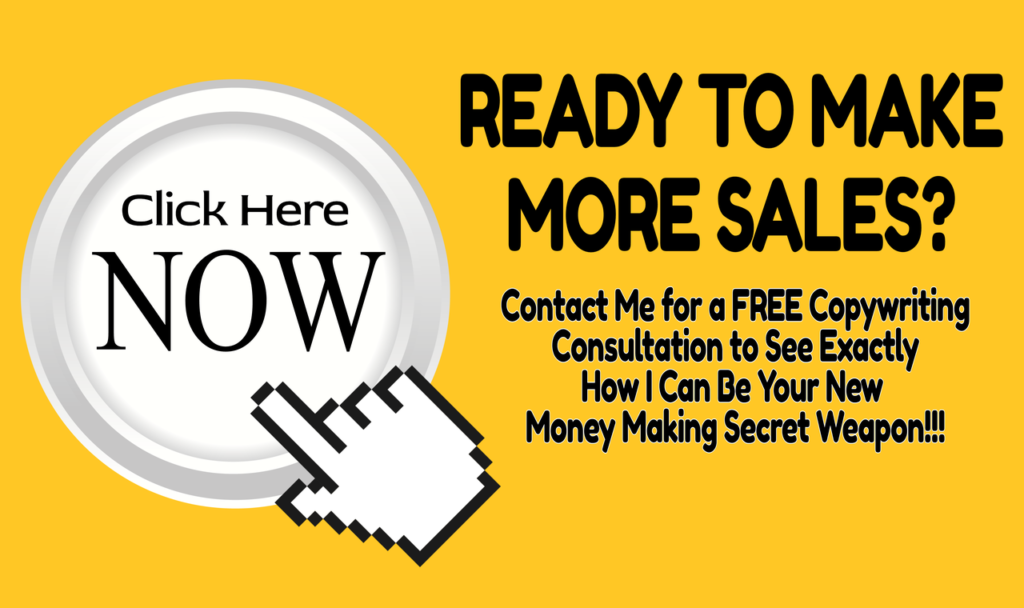Picture this: Jake, a passionate entrepreneur, spent hours crafting what he believed was the perfect email. He was buzzing with excitement, convinced this was the email that would change the game for his fledgling online store.
Yet, after hitting ‘send’ to his growing list of subscribers, the results were… underwhelming. The open rate was decent, but the clickthrough? Abysmal. Frustration simmered as he thought, “Where did I go wrong?”
Sound familiar? If you’ve ever poured energy into an email campaign only to be met with cricket chirps, you’re not alone. In this fast-paced digital age, capturing attention is a battle, and guiding that attention to actionable clicks? Even tougher.
Emails are still the power players in the digital marketing realm. More personal than a social media post and more direct than an ad, they provide an unparalleled opportunity to converse with your audience one-on-one. But with inboxes brimming with promotions, newsletters, and alerts, standing out is a Herculean task.
That’s where the art (and a bit of science) of email copywriting swoops in. In this article, we’ll dive deep into 10 sneaky, yet ethically sound, techniques that can potentially double, if not triple, your email clickthrough rates.
Techniques that have been battle-tested, refined, and proven to drive results.
Ready to transform your emails from mere messages to click magnets? Let’s dive in!
The Basics of Clickthrough Rates: A Quick Refresher
Before we plunge into the nitty-gritty of crafting irresistible emails, let’s pause and take a moment to understand a metric that’s the heartbeat of email marketing: the Clickthrough Rate, often affectionately dubbed CTR.
So, What Exactly is a Clickthrough Rate (CTR)?
Imagine you’ve sent out an email to 100 of your subscribers, and 5 of them clicked on the primary link or button you had in that email. That’s a 5% clickthrough rate. In essence, your CTR represents the percentage of email recipients who clicked on one or more links in your email. It’s a direct indicator of how engaging your email was and how many folks took the desired action.
Mathematically? It’s pretty straightforward: CTR = (Number of Clicks / Number of Delivered Emails) x 100
Why is CTR So Darn Crucial?
CTR is a litmus test for the effectiveness of your email. High open rates are dandy—they show your subject line worked. But CTR? That’s where the rubber meets the road. It indicates whether your email content resonated enough to prompt action. It’s the bridge between passive reading and active engagement, leading readers further down your sales or informational funnel.
Average CTRs: The Industry Benchmark
“Okay, but what’s a good CTR?” I hear you ask. Well, it varies. Depending on the industry, niche, and audience, average CTRs can range significantly. However, to give you a ballpark:
E-commerce: 2.5% – 4.5%
B2B Services: 2% – 3%
Online Education & Courses: 3% – 5%
Health & Wellness: 2% – 3.5%
These are just some rough averages. It’s essential to research and pinpoint the average CTR for your specific niche or industry. But remember, while benchmarks offer guidance, your primary competition should be your own past performance. Always strive to outdo your last campaign!
Understanding your CTR is more than just crunching numbers. It’s about gauging the pulse of your audience—how they resonate with your message and how compelled they feel to act.
With this foundation laid, we’re primed to explore the techniques to elevate that CTR to soaring heights!
Technique 1: The Irresistible Subject Line
You know how they say, “Never judge a book by its cover”? Well, in the email world, that advice doesn’t quite stick. Your subject line is the ‘cover’ of your email, and believe me, it’s getting judged—hard. The result? A swift click to open or a remorseless trip to the trash bin.
Why the Subject Line is Your Email’s Handshake
The subject line is your email’s first impression. In a sea of unopened emails, it needs to stand tall, wave its arms, and shout, “Hey! I’m worth your time!” It’s your foot in the door, the teaser to your email’s story, and your first (and sometimes only) shot at grabbing attention.
Crafting a Subject Line that Begs to Be Clicked: Tips & Tricks
Keep It Crisp: With most people checking emails on mobile, brevity is key. Aim for 50 characters or less to ensure your entire subject line displays.
Evoke Curiosity: Phrases like “Here’s why…” or “The secret to…” pique interest and beckon clicks.
Personal Touch: Using the recipient’s name or referencing past behavior (“Still thinking about that course?”) can boost open rates.
Create Urgency: Fear of missing out (FOMO) is real. “Last chance!” or “24-hour sale” can spur immediate action.
Use Emojis Wisely: A well-placed emoji can make your email pop in an overcrowded inbox. But ensure it aligns with your brand and message.
Real-World Examples that Nailed It
For a Product Launch: “Exciting news, [Name]! Our newest product just dropped.”
Educational Webinar Invite: “Unlock the secrets of SEO—Join us tomorrow!”
Abandoned Cart Reminder: “Forgot something? Your cart misses you.”
Feedback Request: “We value your thoughts, [Name]. Can you spare 2 minutes?”
Think of your subject line as the movie trailer to your email’s blockbuster. It should entice, promise value, and above all, be unmistakably clickable. As you craft your emails, lavish extra love on that subject line. It’s a small string of words with a massive responsibility.
Technique 2: Personalization Beyond Just the Name
“Hey [Name], check out our latest offer!” Sound familiar? It’s the tried-and-true method most marketers adopted when personalization became the buzzword. But here’s the scoop: while using a subscriber’s name is a step in the right direction, true personalization dives much, much deeper.
Moving Past “Hey [Name]”: Why Surface-Level Doesn’t Cut It
Imagine walking into your favorite cafe. The barista doesn’t just greet you by name but remembers your go-to order and asks about your recent vacation that you mentioned last time. That’s deep personalization, and it makes you feel seen, valued, special.
That’s the feeling your emails should evoke. In a world bombarded with generic advertisements and promotions, tailored experiences stand out. They tell your subscriber, “I see you. I understand you.” And that? That’s golden.
Deep Personalization: Going the Extra Mile
Behavior-Based Tailoring: If a subscriber clicked on a link about “advanced yoga techniques” in your last email, maybe your next one could offer them a discount on an advanced yoga course.
Segmentation: Group your subscribers based on demographics, purchase history, or even how they joined your list. Tailor your message to each segment.
Dynamic Content: Use tools that allow content within the email to change based on who’s viewing it. For instance, showcasing different product recommendations based on past browsing behavior.
Lifecycle Stages: A subscriber who just joined your list has different needs from one who’s been around for a year. Tailor your messaging to cater to where they are in their journey with your brand.
Tools to Achieve Deep Personalization
Thankfully, with the advancement of email marketing technology, achieving deep personalization isn’t as daunting as it sounds:
ESP Features: Most Email Service Providers (like Mailchimp, ConvertKit, or ActiveCampaign) come packed with advanced segmentation and personalization features. Dive deep into their capabilities.
Integrations: Tools like Zapier can help integrate your ESP with your website or e-commerce platform, allowing for more intricate behavior-based personalization.
AI-Powered Solutions: Platforms like Dynamic Yield or OneSpot use artificial intelligence to tailor email content to individual users in real-time.
Making Personalization Truly Personal
Ditch the “one-size-fits-all” approach. In this age of digital noise, genuine, tailored interactions are your ticket to standing out and truly connecting. Remember, every subscriber is a unique individual with their own desires, challenges, and histories. Recognize that, honor it, and watch your engagement soar.
Technique 3: Storytelling That Grips
Gather ’round, dear reader, for a tale as old as time. From the ancient campfires to modern Netflix binges, stories have always been at the heart of the human experience. But did you ever consider weaving a narrative into your email copy? Let’s unravel the magic of storytelling and its unparalleled power in email marketing.
Our Brain on Stories: A Love Affair
Ever wonder why a good book is hard to put down or why certain advertisements stick with you for years? It’s all down to neuroscience. Our brains are hardwired to respond to stories. They help us empathize, visualize, and, most crucially for marketers, remember.
Stories release a cocktail of chemicals in our brain, including oxytocin (linked to empathy) and dopamine (related to memory and information processing). So, when you tell a story, you’re not just engaging; you’re creating an experience.
Weaving Email Narratives: Short, Sweet, and Oh-So-Clickable
Now, I’m not saying you should pen a novel in your next promotional email, but a sprinkle of narrative magic can go a long way. Here’s how:
Set The Scene: Start with a relatable problem or scenario. “Ever felt swamped by endless to-do lists?”
Introduce The Hero: This could be you, a satisfied customer, or even the reader themselves. “Meet Sarah, a busy mom and entrepreneur.”
Climax and Solution: Show the challenge and introduce your product/service as the solution. “With our productivity app, Sarah reclaimed her time and peace of mind.”
The Clickable Ending: Conclude with a call to action that feels like the next logical step in the story. “Ready to pen your success story? Try our app today.”
Real-World Example
Subject: “How Sarah Conquered Her Chaotic Schedule ????”
“Sarah felt defeated. Between juggling her startup and playing chauffeur to her kids, her planner was a mosaic of scribbles and crossed-out tasks. Enter: Our SuperProductive App. Within weeks, she transformed from frazzled to unstoppable, all while enjoying more free time. Ready for your transformation? Dive in here.”
Let Stories Drive Your Message Home
In an inbox cluttered with offers, discounts, and pitches, a compelling story is a breath of fresh air. It humanizes your brand, fosters connection, and most importantly, guides the reader to act.
So, the next time you’re crafting that email, think of Sarah and remember: a good story isn’t just read; it’s felt.
Technique 4: The Power of the P.S.
Alright, let’s play a quick game. Think back to the last handwritten letter (or email) you received. If there was a “P.S.” at the end, I’m willing to bet that your eyes darted there almost immediately. Am I right? There’s an almost magnetic pull to that “Postscript” section. So, why not harness this power in your email campaigns?
The Allure of the Postscript: Why We Can’t Resist
The “P.S.” is a relic from the days of handwritten letters, where adding a postscript was easier than squeezing in words above. In today’s digital world, it’s no longer a necessity, but it’s retained its charm and pull.
There are a few reasons why postscripts captivate us:
It Stands Out: Being separate from the main body, a P.S. naturally draws the eye.
Curiosity: We think, “If it’s added as a P.S., it must be juicy or crucial.”
Brevity: A P.S. is typically short and to the point, making it an easy, quick read.
Crafting a P.S. That’s Impossible to Ignore
Now, while a P.S. naturally draws attention, it’s what you put in there that determines its effectiveness. Here’s how to make it irresistible:
Reiterate Key Offers: If there’s a limited-time discount or bonus, remind them here. “P.S. Only 10 slots left for that 50% discount!”
Add Urgency: Make readers feel like they’re potentially missing out. “P.S. That free eBook? It’s only up for grabs till midnight!”
Include Testimonials: A short, impactful testimonial can provide that last nudge. “P.S. Jane used this method and boosted her sales by 150% in a month!”
Personal Touch: Sometimes, a genuine, personal note can create a connection. “P.S. I genuinely believe this course can change your life, as it did mine.”
An Example in Action
Imagine you’re promoting a webinar. Your email ends with: “Can’t wait to see you there!”
Then you add:
“P.S. Last time we did this webinar, attendees said it was the most insightful 60 minutes of their week. Just saying! Secure your spot.”
The Little P.S. with a Big Impact
While it might seem like a mere afterthought, a well-crafted P.S. can be the clincher, the final push that moves your reader to action. So, the next time you’re wrapping up your email, give that little “P.S.” the attention it truly deserves.
Technique 5: Enticing with Exclusivity
Ever notice how the allure of a “limited edition” product or an “exclusive member event” instantly cranks up your interest levels? Why does a “5 seats left!” message make you scramble to reserve a spot? Welcome to the world of exclusivity, a powerful psychological lever that can transform your email game.
The Mind’s Tug Toward the Exclusive: It’s All About Scarcity
At its core, our reaction to exclusivity is rooted in the basic economic principle of supply and demand. When something is scarce or limited, its perceived value skyrockets. Our brain sends out little alarm bells: “If I don’t act now, I might lose out!” This creates a sense of urgency and propels us into action.
Additionally, exclusivity plays into our innate desire to belong, to be part of something special or elite. An exclusive offer feels like a VIP pass, setting us apart from the crowd.
Leverage FOMO: Making Readers Fear Missing Out
FOMO, or the “Fear of Missing Out,” is that anxious feeling you get when you think others are having rewarding experiences you’re not a part of. In email marketing, triggering FOMO can lead to increased clicks and conversions. Here’s how:
Limited Time Offers: Specify a tight deadline. “48-hour flash sale!” or “Offer ends tonight!” puts a ticking clock on the decision, pushing readers to act quickly.
Limited Quantity: “Only 3 items left in stock!” or “5 webinar slots remaining!” makes readers feel they’re competing against others for something scarce.
Exclusive Access: Words like “VIP,” “members-only,” or “early-bird access” make readers feel they’re getting something not everyone can.
Show Others Taking Action: “1000+ people already grabbed this deal!” not only taps into FOMO but also offers social proof.
Crafting a FOMO-Driven Email: An Example
Subject: “You’re Invited: VIP Early Access Just for You”
“Hey [Name],
Guess what? As one of our cherished subscribers, you’ve unlocked an exclusive sneak peek at our upcoming collection! But here’s the catch: this early-bird access is only available for the next 24 hours.
Don’t miss out on being the first to snag these limited-edition pieces!
Claim Your VIP Access Now
P.S. Last time, our VIP slots sold out in 3 hours. Just a heads up!”
Exclusivity as Your Email’s Secret Weapon
We’re all wired to desire what’s exclusive or limited. When deployed ethically and genuinely, this desire can elevate your email campaigns, pushing your readers from mere interest to eager action. Ready to roll out the red carpet for your subscribers?
Technique 6: Social Proof and Testimonials
Imagine you’re exploring a new city, and you stumble upon two coffee shops side by side. One is bustling, with nearly every table occupied, while the other is eerily empty. Instinctively, which one do you gravitate towards? For most of us, it’s the busy one. Why? Because we often rely on the choices of others as a cue for our own decisions. This is social proof in action.
The Power of the Herd: Why We Seek Validation
Humans, by nature, are social creatures. We often look to our peers to gauge what’s acceptable or desirable. This “herd mentality” can be traced back to our evolutionary roots, where sticking with the group often meant safety. In modern times, this translates to trusting reviews, ratings, and yes, testimonials. If others are raving about it, it must be good, right?
Using Testimonials to Boost Email CTR: The How-To
Incorporating testimonials into your emails can significantly up their persuasive power. Here’s how you can effectively weave them in:
Use Real Words from Real People: Avoid vague statements like “Our customers love us!” Instead, use direct quotes. “I’ve doubled my revenue using this tool!” – Jane D.
Include Pictures: If possible, add a photo of the testimonial giver. It humanizes the quote and increases trust.
Highlight Specific Benefits: Instead of generic praise, focus on testimonials that highlight specific features or results. “The course’s Module 3 alone revolutionized my approach to sales.”
Tailor to the Email Content: If you’re promoting a particular product or feature, pull in testimonials related to that specific offer.
Position Strategically: While testimonials can be effective anywhere in the email, they’re especially potent right before a call to action, reinforcing the click.
Crafting an Email with Testimonials: A Mini Example
Subject: “Why Thousands Trust [Your Product]”
“Hey [Name],
Looking to up your marketing game? You’re not alone. Thousands have turned to [Your Product], and the results? Well, let’s let them do the talking:
‘Ever since I started using [Your Product], my conversion rate skyrocketed by 75%! It’s a game-changer.’ – Alex P.
‘The support team for [Your Product] is top-notch. They had my back during every step!’ – Maria S.
Ready to join the ranks of these satisfied customers?
Grab Your [Product] Now
P.S. Got questions? We’re always here to help!”
Let Others Sing Your Praises
While self-promotion is essential, sometimes the most compelling endorsements come from the mouths of those who’ve been there, tried that. Lean into the power of social proof, and let your satisfied customers elevate your email game.
Technique 7: Clear, Compelling CTAs
Alright, pop quiz time! You’ve crafted an impeccable email: engaging story, check; social proof, check; exclusive offer, check. But then, you end with a bland “Click here” CTA. What do you think happens? Chances are, not much. That’s because your Call to Action (CTA) is the climax of your email—the make or break moment—and it needs to shine.
Why “Click Here” Just Doesn’t Cut the Mustard
While “Click here” is direct, it’s also uninspiring. Your audience receives countless emails daily, and each one demands some action. If your CTA doesn’t stand out, it’s simply background noise. Plus, a generic CTA fails to convey the benefit or the value the reader will get from clicking.
Crafting CTAs That Are Practically Irresistible: Here’s How
State the Value Clearly: Instead of “Learn more,” try “Discover the secrets.” Instead of “Buy now,” how about “Secure my spot”?
Make It Personal: “Get my free guide” can feel more tailored than “Get the free guide.”
Play with Urgency: FOMO isn’t just for the main content. “Grab yours before they’re gone!” can drive immediate action.
Vary the Action Words: Buy, Discover, Learn, Secure, Dive In, Unleash, Start… there’s a whole lexicon beyond just “Click.”
Size and Design Matter: A CTA button often outperforms a text link. Ensure it’s big enough to stand out but not so big it’s obnoxious. And pick a color that contrasts with your email design.
Positioning is Key: While it’s common to have the main CTA at the end, consider placing one above the fold (the part of the email seen without scrolling). And if your email is long, sprinkle a couple of CTAs throughout.
CTA in Action: An Illustrative Example
Imagine you’re promoting an upcoming webinar on content marketing.
Instead of: “Want to join? Click here.” Try: “I’m in! Reserve my seat for the content magic.”
Or even: “Yes, elevate my content game!”
The CTA—Your Email’s Grand Finale
Think of your CTA as the crescendo of your email symphony. It needs to resonate, captivate, and inspire action. A generic button just won’t cut it in the competitive inbox arena. So, give your CTAs the attention they deserve, and watch those click rates soar.
Technique 8: Visuals that Enhance, Not Distract
Picture this: An email lands in your inbox, and as you open it, you’re bombarded with a cacophony of clashing colors, oversized images, and distracting GIFs. Instead of enhancing the message, the visuals send your brain into overdrive, making you hit that ‘delete’ button faster than you can say “visual overload.” Visuals in emails can be a double-edged sword. When done right, they can amplify your message. But, get them wrong, and they become a recipe for disaster.
The Power of Visuals: Why They Matter
A well-placed, relevant image or GIF can do wonders for your email:
Breaks the Monotony: Large blocks of text can be daunting. Visuals break up the content, making it more digestible.
Elicits Emotion: Pictures can stir emotions faster than words. A smiling face, a picturesque landscape, or even a playful GIF can evoke feelings that resonate with your message.
Clarifies Complex Ideas: Infographics or simple diagrams can distill complex topics, making them easily understandable.
But Beware! Common Visual Pitfalls
Overloading with Images: Too many visuals can overwhelm the reader, diluting your main message.
Irrelevant Visuals: A cute cat GIF might grab attention, but if it has nothing to do with your email’s content, it’s just a distraction.
Heavy Files: Large image files can slow down email loading times. A delayed load can lead to impatience and the dreaded ‘delete’.
Not Optimizing for Mobile: If your visuals aren’t mobile-responsive, you risk alienating a significant portion of your readers who check emails on their phones.
Crafting a Visually Cohesive Email: Tips to Swear By
Stay On-Brand: Your visuals should align with your brand colors, fonts, and overall vibe. Consistency builds trust.
Prioritize Relevance: Every visual should add value and relevance to your message. No random stock photos!
Optimize Image Sizes: Tools like TinyPNG or Compressor.io can help reduce image file sizes without compromising on quality.
Alt Text is a Must: Not all email clients automatically display images. Alt text ensures your readers know what they’re missing and can be crucial for accessibility.
Test, Test, Test: Before hitting ‘send’, preview your email on different devices and email clients to ensure all visuals display correctly.
Visuals—Your Email’s Silent (But Powerful) Ally
When used judiciously, visuals can be the secret sauce that makes your email truly delectable. They have the power to enhance, elucidate, and elevate. So, the next time you’re crafting that perfect email, remember: visuals are not just ornaments; they’re integral storytellers.
Technique 9: Mobile-First Optimization
Here’s a fun exercise. Reach into your pocket or glance beside you. I bet there’s a high chance you’ve just laid eyes on your trusty smartphone. Now, think of the last email you opened. Odds are, you did it on that very phone. With the explosive growth of mobile usage, optimizing your email for these smaller screens isn’t just a ‘nice-to-have’; it’s an absolute must.
Mobile Email Opens: The Eye-Opening Stats
Before we dive deep, let’s let the numbers do some talking:
Majority Rules: Over 60% of email opens now occur on mobile devices, and this number is steadily climbing.
Swift Decisions: Mobile readers, on average, spend just a few seconds deciding whether to engage with an email or discard it.
The Brutal Truth: Emails that aren’t optimized for mobile often get deleted. In some studies, almost 80% of readers said they’d do so.
Seeing these stats, it’s crystal clear: if your email looks wonky on mobile, you’re swimming upstream.
Crafting Mobile-Magnet Emails: Here’s Your Game Plan
Responsive Design: Ensure your email design adjusts fluidly across devices. Most modern Email Service Providers (ESPs) offer responsive templates.
Succinct Subject Lines: On mobile screens, lengthy subject lines get cut off. Aim to captivate in 40 characters or less.
Big, Bold CTAs: Your call-to-action buttons need to be thumb-friendly. Make them large enough to tap, but not so big they dominate the screen.
Vertical Layout: While on desktop, a 2 or 3 column layout might look neat; on mobile, it’s all about stacking. Ensure your content flows vertically for easy scrolling.
Readable Fonts: Tiny text is a no-go. Stick to fonts that are legible on smaller screens without readers having to zoom in.
Images with Care: While visuals are crucial, remember that they might load differently (or not at all) on mobile. Ensure your email still makes sense even if images don’t display. And always, always use alt text.
Test Relentlessly: Before you hit ‘send’, preview your email on different mobile devices and screen sizes. What looks good on an iPhone might look different on a Samsung Galaxy.
Embrace the Mobile Wave, Don’t Fight It
Look, mobile isn’t the future. It’s the present. As we increasingly lean into our smartphones for almost everything, ensuring your emails shine on these screens is non-negotiable. So, the next time you’re drafting that killer email, visualize it on a 6-inch screen and ask: “Would I tap on this?”
Technique 10: Engage with Engaging Questions
Remember being a kid, when every other sentence you uttered was a question? “Why is the sky blue?” “How do birds fly?” That innate curiosity didn’t just vanish as we grew up. It’s still there, nudging us, driving us to seek answers. For an email marketer, this inherent human trait is golden. Let’s delve into how posing the right questions can supercharge your emails.
The Magic of Questions: Tapping into Curiosity
Questions naturally pique our interest. They open loops in our minds that we’re eager to close. By asking a question, you’re indirectly challenging the reader, making them think, and more importantly, making them curious. And what’s the best way to satiate that curiosity? By clicking through, of course!
Crafting Questions That Are Irresistible Click Magnets
Here’s the fun part. How do you frame questions that not only engage but also lead to clicks? Let’s break it down:
Relate to the Reader: The question should resonate with the reader’s pain points or aspirations. “Struggling to get a good night’s sleep?” hits differently than a generic “Want to know more about our product?”
Open-Ended Over Yes/No: “Want to skyrocket your sales?” might get a mental “yes,” but it doesn’t necessarily provoke a click. Instead, “What’s the one strategy proven to skyrocket sales?” promises an answer behind the click.
Pose a Challenge: Questions that subtly challenge the reader can be highly engaging. “Do you know the top mistake most new entrepreneurs make?”
Inject Curiosity: Frame questions that promise a revelation. “Ever wondered what the five essentials every digital marketer swears by are?”
Personalize: With segmentation and personalization tools, you can tailor your questions to segments of your audience. “As a content creator, do you know the tool that can save you 5 hours a week?”
Question-Driven Email Example:
Subject: “The Secret to Double Productivity?”
“Hey [Name],
Ever felt like 24 hours just aren’t enough? Like your to-do list grows faster than you can tick items off?
What if there was a single technique, proven to double your productivity? Intrigued?
Dive in and discover the game-changer!
Cheers, [Your Name]”
Ask, Engage, Convert
In the world of email marketing, sometimes it’s not about having all the answers but about asking the right questions. They can be the hook, line, and sinker that draw readers into your content. So, the next time you’re drafting that email, maybe start by asking: “What would my reader want to know?”
The Ethics of “Sneaky” Techniques
Let’s take a brief pause. By now, you’re armed with a toolkit of crafty, effective techniques to enhance your email campaigns. But, like any power, there’s a responsibility that comes with it. While it’s tempting to use every trick in the book to get those clicks and conversions, it’s essential to always navigate with a compass of ethics and integrity. Here’s why and how.
The Thin Line: Persuasion vs. Manipulation
In the world of marketing, there’s a fine line between persuasion and manipulation. Persuasion is about influencing decisions while maintaining respect for the individual’s autonomy. Manipulation, on the other hand, exploits psychological tricks without regard for the individual’s well-being or choice.
While some “sneaky” techniques are just smart strategies, others can edge into the territory of manipulation. As responsible marketers, it’s our duty to stay on the right side of this divide.
Serving Your Readers: The Golden Rule
Always prioritize the value and well-being of your audience. Here’s a litmus test: Ask yourself, “Is this tactic genuinely beneficial for my readers, or is it just boosting my metrics?” If it’s the latter, it’s time to rethink.
Tips to Ensure Ethical Emailing:
Transparency is Key: If it’s an affiliate link, disclose it. If it’s a sponsored post, make it clear. Honesty always pays in the long run.
No False Scarcity: While creating urgency can be effective, avoid fabricating limited offers or inventing fake countdowns.
Prioritize Value: Every email should offer value, whether it’s in the form of information, entertainment, or special offers. Avoid sending emails just for the sake of sending them.
Respect Privacy: Always adhere to data protection regulations. Never share or sell subscriber data without explicit consent.
Be Open to Feedback: Always keep channels open for feedback. If subscribers feel a tactic was overly pushy or misleading, take that criticism on board.
Building Trust: The Ultimate ROI
While open rates, click-through rates, and conversions are all critical, there’s another ROI (Return on Integrity) to consider. Trust. Once you earn your readers’ trust, they’re more likely to become loyal customers, advocates, and promoters of your brand.
Tread Carefully, Email Ethically
The tools and techniques you’ve learned are potent. But remember, with great power comes great responsibility. Always strive for a balance between achieving your email marketing goals and respecting and serving your subscribers. After all, at the heart of every email address is a real person, and maintaining their trust is the true secret to long-term success.
Whew! We’ve been on quite a journey, haven’t we? From the undeniable allure of irresistible subject lines to the psychological pull of questions, we’ve dived deep into the nitty-gritty of email copywriting. Each technique, when applied with finesse, has the power to transform your email campaigns from the mundane to the magical.
The Potential is Undeniable
Remember, while these techniques are ‘sneaky’, they’re not about trickery. They’re about understanding the human psyche, about recognizing what resonates, and about crafting messages that truly connect. These aren’t just tactics; they’re tools for genuine engagement.
Your Challenge, Should You Choose to Accept
Here’s my challenge to you: Pick just one technique from this treasure trove. Implement it in your next email campaign. Observe the difference. Whether it’s a spike in your open rates, a boost in click-throughs, or a surge in conversions, you’re bound to witness some magic. And when you do, I’d love to hear about it!
Ready for Some Real Magic?
Now, while these techniques are potent, sometimes you need that extra sprinkle of expertise to truly make them shine. That’s where I come in. With over seven years in the direct response copywriting arena, I’ve honed the art of crafting emails that not just captivate but convert.
???? Exclusive Offer: How about we hop on a FREE Copywriting Consultation?
Together, we can explore how to elevate your email game, ensuring each message you send out is not just read but remembered. Let’s unlock the potential of your email campaigns, ensuring every word works tirelessly for your brand.
Ready to level up? Reach out, and let’s make some email magic together!
About the Author
Robert Sean Pascoe is a direct response copywriter and marketing strategist who works with entrepreneurs worldwide to create advertising and marketing campaigns that MAXIMIZE their profits.
He LOVES Rock N Roll, old school pro wrestling, Star Wars and pretty much ANYTHING 1980’s.
With 7 years of freelance copywriting experience and a lifetime in sales, Robert knows how to use the power of words to sell virtually anything to anyone, especially if the market has been properly defined (and you BETTER have that right!).
Robert enjoys primarily working with small business owners to sell more of their products and services through the power of direct response advertising and marketing.
He has written sales copy for companies in such diverse niches as Weight Loss Supplements, Skin Care, Male Enhancement, Local Marketing Agencies, Live Event Seminars, Software Developers, Insurance Agencies, Real Estate Brokerages, Marketing Consultants, and many, many more.






